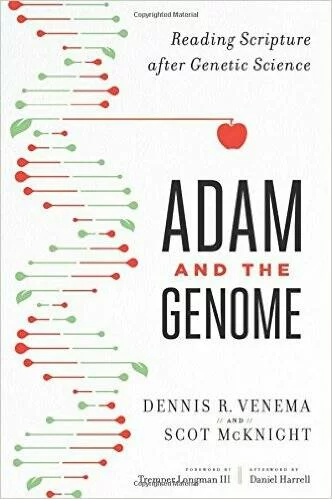At the heart of the Christian faith is the idea that Jesus Christ was raised from the dead.
To be clear: this idea runs counter to human experience and is thoroughly “anti-scientific.” Over 100,000 years of human experience teaches that when people die, they remain dead. And this experience is borne out by centuries of scientific study into human biology.
Yet a strong historical case can be marshalled for the life, death, and resurrection of Jesus Christ. The historical evidence for the resurrection combined with the realization that this event transcends the laws of nature is clear evidence that God intervened in human history to perform a miracle, contravening the laws of nature.
Philosophical Commitments
I don’t know of any evangelical or conservative Christian who would deny the resurrection. Nor would they deny the virgin birth—another phenomenon that defies scientific explanation. As Christians, we readily embrace anti-scientific ideas when they are central to Christianity. We do not reinterpret them as allegorical or as literary constructs that merely teach theological truths just so that they can be accommodated to scientific “truth.” We regard them as real events in space and time in which God discernibly acted in a miraculous way.
As Christians, we readily embrace anti-scientific ideas when they are central to Christianity … We regard them as real events in space and time in which God discernibly acted in a miraculous way.
Explanations for the resurrection and the virgin birth fly in the face of methodological naturalism—the philosophical idea undergirding contemporary science. According to this philosophical system, scientific explanations must rely on material causes—natural-process mechanisms. Any explanation that appeals to the work of a supernatural agent—a Creator—cannot be part of the scientific construct. By definition, these types of explanations are forbidden. Yet when it comes to the resurrection and the virgin birth, Christians reject methodological naturalism without apology. We don’t try to force these events within the framework of methodological naturalism by arguing that God used the laws of nature to cause the virgin birth or the resurrection. Why? Because the explanations for these events go beyond nature’s laws—these events are transcendent miracles.
Given the theological importance of Adam and Eve’s role as humanity’s founding couple, should evangelical scholars not be willing to be circumspect about embracing methodological naturalism when it comes to the historicity of Adam and Eve?
Role of Methodological Naturalism in Venema’s Argument
It is important to acknowledge the powerful—yet, often unrecognized—role methodological naturalism plays in propping up the case for common descent and, hence, human evolution. Because of methodological naturalism’s influence, the only permissible way to interpret shared genetic features within the mainstream scientific enterprise is from an evolutionary framework. Any explanation evoking teleology is off the table—even if a creation model can account for the data. A creation model approach will never receive a hearing in the scientific community today because it violates the tenets of methodological naturalism. Due to this sway, common descent and human evolution must be true—by default. No other option is allowed.
Because of methodological naturalism’s influence, the only permissible way to interpret shared genetic features within the mainstream scientific enterprise is from an evolutionary framework.
Like most evolutionary creationists, Venema embraces methodological naturalism when it comes to the question of human origins. Yet he rejects this principle when it comes to the virgin birth and the resurrection, rendering his approach to science inconsistent. Why apply the principles of methodological naturalism to human origins, but not to questions surrounding the resurrection or the virgin birth?
Methodological naturalism has a track record of success when it guides investigation of secondary, proximal causes. But one could argue that this philosophical framework often comes up short when scientific questions focus on primary or ultimate causes, such as the origin of the universe or the origin of life.
In fact, I wonder if Christians should embrace methodological naturalism at all. At its essence, this philosophical approach to science is inherently atheistic. It is true that a Christian could accept a limited or weak form of methodological naturalism, because Scripture teaches that God has providentially instituted processes that operate within the creation to sustain it. When studying these types of phenomena, application of methodological naturalism appears to be justified, because the work focuses on identifying and characterizing secondary, proximal causes God has ordained.
But what about the question of origins? Given the descriptions of God’s creative work in the creation accounts, it looks as if God intervened in a direct, personal way when it comes to the origin of the universe and the origin and history of life—including humanity’s genesis. If so, then methodological naturalism serves as a questionable guide to certain scientific questions, because it insists that all origin events must have mechanistic causes—even if they do not.
Adherents of methodological naturalism defend its restrictions by arguing that science can’t put God in a test tube. Yet it is a straightforward exercise to show that science does have the tool kit to detect the work of intelligent agents within nature and to characterize their capabilities. (SETI—the Search for Extraterrestrial Intelligence—is an intelligent design research program.) By extension, science should have no problem detecting a Creator’s handiwork—and even determining the Creator’s identity.
So what happens if scientists relax the restrictive requirements of methodological naturalism when we investigate the question of human origins?
If we do, it becomes evident that human evolution is not unique in its capacity to explain shared genetic features.It becomes conceivable that the shared genetic features in the genomes of humans and the great apes reflect shared designs employed by a Creator. It becomes conceivable that the shared genetic features in the genomes of humans and the great apes reflect shared designs employed by a Creator.
Though repressed by contemporary mainstream science, this interpretative approach is not anti-scientific. In fact, there is a historical precedent for viewing shared genetic features as evidence for common design, not common descent. Prior to Charles Darwin, distinguished biologist Sir Richard Owen interpreted shared biological structures as manifestations of an archetype that originated in the mind of the First Cause, not the products of descent with modification. Darwin later replaced Owen’s archetype with a common ancestor.
If the action of an intelligent agent becomes part of the construct of science and, hence, biology, then the shared “molecular fossils” in the genomes of humans and the great apes, such as pseudogenes, uniquely point to common descent only if certain assumptions are true:
- the genomes’ shared structures and sequences are nonfunctional;
- the events that created these features are rare, random, and nonrepeatable;
- no mechanisms other than common descent (vertical gene transfer) can generate shared features in genomes.
However, recent studies raise questions about the validity of these assumptions. For example, in the last decade or so, molecular biologists and molecular geneticists have discovered that most classes of “junk DNA,” including pseudogenes, have function. (Interested readers can find references to the original scientific papers in the second expanded edition of Who Was Adam? and The Cell’s DesignFazale Rana with Hugh Ross, Who Was Adam? A Creation Model Approach to the Origin of Humanity (Covina, CA: RTB Press, 2015), 341–8; Fazale Rana, The Cell’s Design: How Chemistry Reveals the Creator’s Artistry (Grand Rapids, MI: Baker, 2008), 255–60.) In fact, the recently proposed competitive endogenous RNA hypothesisFor further discussion, see http://www.reasons.org/articles/unitary-pseudogenes-have-function-part-1 and http://www.reasons.org/articles/unitary-pseudogenes-have-function-part-2 explains why pseudogenes must display similar sequences to their functional counterparts in order to carry out their cellular function.
These advances serve to weaken key assumptions needed for a common-descent argument. Considering these discoveries, is it possible to make sense of the shared genomic architecture and DNA sequences within the framework of a creation model?
A Scientific Creation Model for Common Design
What follows is a brief abstract of a genomics model I have been working on with a molecular biologist colleague at Reasons to Believe. A detailed defense of our model can be found in the second expanded edition of Who Was Adam?Rana with Ross, Who Was Adam?, 368–72.
A key tenet of the model is the idea that organisms and their genomes are the products of God’s direct creative activity. But once created, genomes are subjected to microevolutionary processes.
In brief, our model explains the similarities among organisms’ genomes in one of two ways:
- As reflecting the work of a Creator who deliberately designed similar features in genomes according to: (a) a common function; or (b) a common blueprint.
- As reflecting the outworking of physical, chemical, or biochemical processes that (a) occur frequently; (b) are nonrandom; and (c) are reproducible. These processes cause the independent origin of the same features in the genomes of different organisms. These features can be either functional or nonfunctional.
Our model also explains genomes’ differences in one of two ways:
- As reflecting the work of a Creator who deliberately designed differences in genomes with distinct functions.
- As reflecting the outworking of physical, chemical, or biochemical processes that lead to microevolutionary changes.
In principle, our model can account for similarities and differences in the genomes of organisms as either the deliberate work of a Creator or via natural-process mechanisms that alter the genomes after creation.
Did Humanity Begin as a Primordial Pair or a Population?
One point Venema fails to acknowledge is that the population sizes generated from genetic diversity data are, at best, merely estimates, not hard and fast values. That’s because the mathematical models these methods are based on are highly idealized, and they generate differing estimates based on several factors.
More significantly, however, recent studies focusing on birds and mammals raise questions as to whether these models predict population size. As the author of one study states, “Analyses of mitochondrial DNA (mtDNA) have challenged the concept that genetic diversity within populations is governed by effective population size and mutation rate . . . the variation in the rate of mutation rather than in population size is the main explanation for variations in mtDNA diversity observed among bird species.”Hans Ellegren, “Is Genetic Diversity Really Higher in Large Populations?” Journal of Biology 8 (2009): 41.
In fact, several studies—involving white-tailed deer, mouflon sheep, Przewalski’s horses, white-tailed eagles, the copper redhorse, and gray whales in which the original population size was known—revealed that the measured genetic diversity generations later was much greater than expected based on the models.Rana with Ross, Who Was Adam?, 350–2. In turn, if this data was used to estimate initial population size, the numbers would be much greater than the models predicted.
Given how poorly these population-size models perform, it is hard to argue that science has falsified the notion that humanity descended from a primordial pair.
Looking to the resurrection as an example and by relaxing the vise grip of methodological naturalism on scientific inquiry, Christian scholarship stands to advance on the historical case for Adam and Eve.






Comments
Be the first one to make a comment!